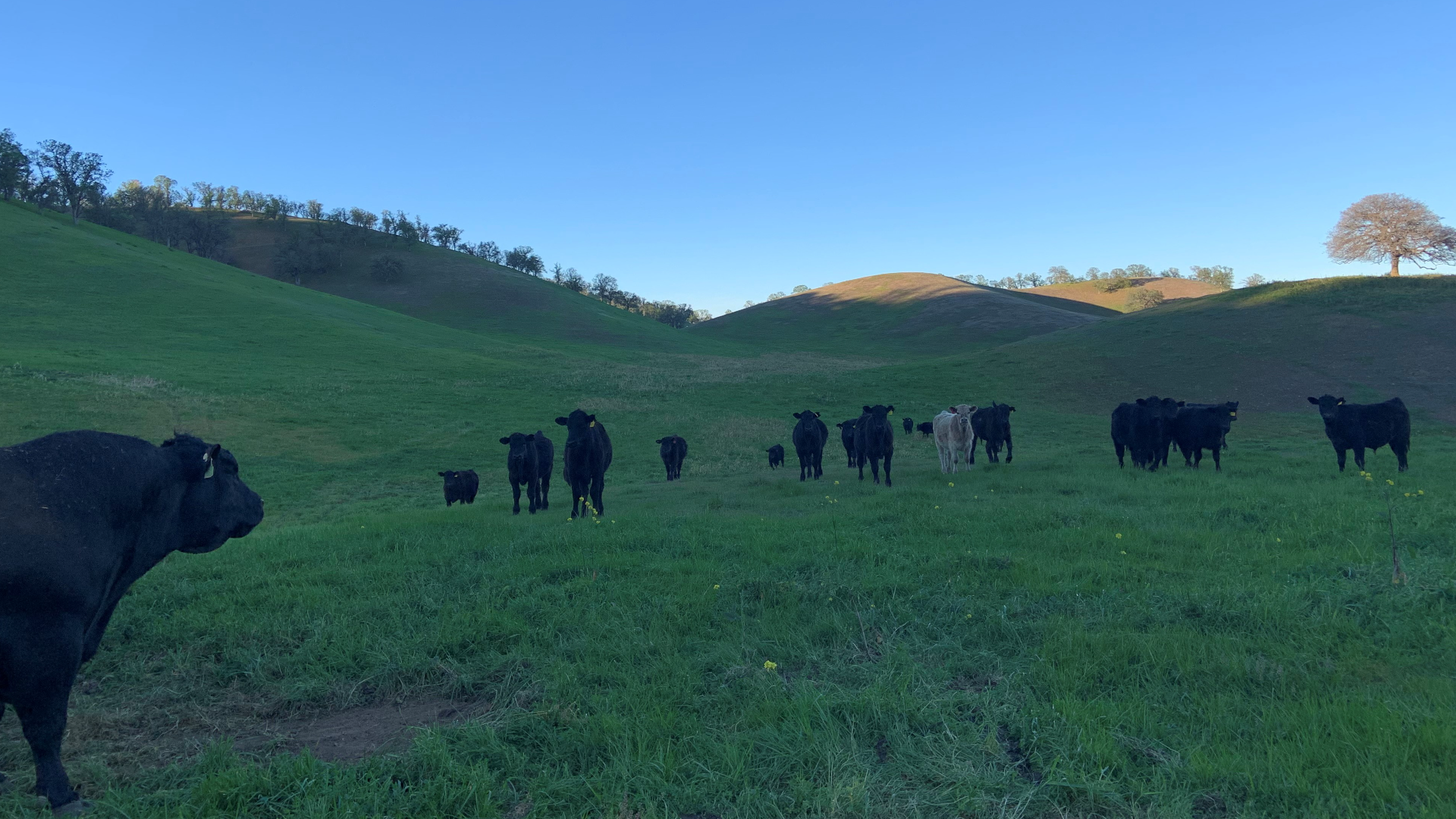Cattle ranchers battle drought while struggling to maintain conservation habitats
Agriculture has had their bout with water but now cattle and wildlife, are literally looking for greener pastures
KXTV

Article Local farmers share their story
California’s vast land doesn’t just consist of valleys, mountains, and oceans. There are rolling hills, home to major grassland and wildlife. It’s a territory that can have the most amazing views of large acreage, but it also comes with its faults.
The land needs to be managed and is often great for grazing goats and sheep, as well as cattle. Most of the territory can’t be mowed, and the nooks and crannies are perfect for livestock. It is also home to bears, wild pigs, coyotes, deer, and, in the past, elk. Aside from these large animals, hundreds of thousands of birds fly over this area for a place to land, when there is water.
Cattle ranchers Mike and Kathy Landini, have about 2,000 acres on their ranch, known as Divide Ranch, in Elk Creek, near Willows.
"We knew we didn't want to live in the Bay Area. From the time I was a kid, I knew that it wasn't where I belonged," Kathy Landini said.
The family has been there for over 20 years and has seen the ups and downs of maintaining the land. They say keeping the grass healthy is the key to success for their cattle and for the wildlife.
California is undergoing its third drought year in a row, and ponds that scatter over the Divide Ranch have gone dry. Even with some solid storms in October and December, it’s not enough for the animals.
In the shadow of the Mendocino National Forest, Elk Creek oven receives less rain. It’s known as a rain shadow. Earlier storms this winter season have brought some rain to the area, allowing for the grass to green up quickly.
The Landini’s say they will continue to rotate their grazing cattle and save some taller grass for later in the season, but when it comes to the water situation, they will need to find greener pastures in Oregon.
“They all go by truck. They'll go by semi, and those semi loads went from $900 to $1,600 in the last 10 years. So, (it) adds up. Every cow is costing more to get her there and get her home” said Mike Landini.
Pumping water in Elk Creek isn’t much of an option. The Landinis say they store water in their wells when it does rain, otherwise it has to be taken to their ranch.
“We provided livestock water with our wells and our tanks, and then this year, we ran out of that water,” Mike Landini said.
Rice farmer and Congressman Doug LaMalfa says California’s water situation needs better oversight and federal attention.
“The allocations for what is known as the water contractors is going to be zero. That means a whole bunch of farmers here in Northern California, Central Valley, California grows 90% or more - about at least 12 different crops nationally - that Americans use. If we don't grow it here, then it has to be imported. Prices are already up” LaMalfa said.
It's easy for many to want to give up on this land that seems too rural to help, but it's the land that needs its own stewards.
People like the Landinis who want wide open spaces, provide for the land just as much as it gives back to their cattle. These properties, managed by their owners and the livestock, help in limiting the extent of wildfire outbreaks. The grass is cut short and less "fuel" is available for fires, helping firefighters get a handle on these possible blazes.
Video
WATCH ALSO:


















